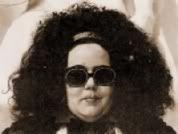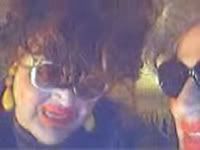| What about story as character, character as story? If you've ever been in a screenwriting or creative writing class, you're familiar with the "character study." These exercises aren't meant to stand on their own, or even be read by anyone else; they're just a way for the writer to explore/develop/get to know the character. Occasionally a film gets made that is actually a character study. The idea is that "the character is the story." But a character isn't "story" until placed in a context that allows meaning to arise. Then you have a character-driven story (fueled by character's dramatic need) — not merely a two-hour look at a character being who he/she is. So a character needs some kind of context in order to "be a story" — that is, to generate meaning, to illuminate more than just a fictional personality for its own sake. But that context doesn't necessarily have to be a traditional narrative structure. This is one of the strengths of new media: work can be crafted for specific purposes outside traditional genres, structures and formulas. For instance, the essay is a powerful form rarely used on TV outside of journalism/news editorials and film reviews, but proliferating online. Many videoblogs are basically personal video essays. But the video essay is not limited to journalism or even "realism." Expanding the essay form into dimensions of fiction and hyperreality can allow even greater meaning to arise. Stephen Colbert's The Colbert Report is a great example of how the fictional element (character) can combine with the "real" element of news media to generate a more potent commentary than fact alone. This is an area where character can actually "become story": juxtaposing the character with some aspect of reality (great or small) creates tension and meaning. The premise may be extremely simple: Character X records her own opinions and reactions to events in the real world. It is up to the writer to execute this in a way that sheds light upon those events, and perhaps even on our culture as a whole. By way of example, I'd like to offer three video essays featuring Betty Butterfield, a character who, over the course of 74 episodes, becomes a story: the story of our culture, the story of how we all make each other who we are. You can learn more about Betty's creator here and here. All 74 episodes of Betty belong to the public domain and are available on Internet Archive (just search for her name in the Moving Images category). Like so much media found on the Internet, Betty was discovered by happy accident. I was browsing Internet Archive for public domain video related to Wal-Mart, and I saw her thumbnail; I thought it was a picture of a Transylvanian (as in "Rocky Horror", not the region).   | Click on images to play Dig friend Betty's astute observations about late-night TV. Supremely one with her/our/their culture, she speaks for all of us; way down deep in our ineluctable reptile brains, we are everyBetty.  Ever heard the screenwriting adage "Show, don't tell"? Well, if you ever doubted it, take a look — here's why. This hyperreal dialogue between Betty and her sister Bonita (and the camera) is infinitely more powerful than the standard-model public service announcement; it skips the tired information, the preaching, and the spokesperson's lame attempts at sincerity, and gets right into ghastly.  What's wrong with Wal-Mart? You can find out by watching this footage of a day-long protest, or you can listen to Betty for two minutes. Note the use of an unsympathetic and unreliable narrator; Betty is an appalling individual, yet we learn so much from her... she is the Humbert Humbert of vlog culture. |






